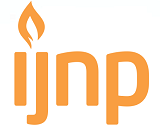Medical Play on Children's Anxiety and Pain during Peripheral Intravenous Cannulation
Keywords:
anxiety, medical play, pain, preschoolAbstract
Background: Insertion of peripheral intravenous cannulation during hospitalization can cause anxiety and pain in preschool children. Anxiety in children due to the installation of peripheral intravenous cannulation can result in fear, discomfort, and non-cooperation, which can have a bad impact on the child's psychological and physiological condition. Unresolved pain can result in traumatic experiences for children. One distraction technique that can be applied to overcome anxiety and pain is medical play.
Objective: The research aimed to analyze the effect of medical play on anxiety and pain in preschool-aged children when undergoing peripheral intravenous cannulation.
Methods: This research used a quasi-experimental pre and post-test with a control group design involving 31 control group respondents and 31 intervention respondents. The respondent selection was carried out using consecutive sampling techniques. Univariate and bivariate data analysis used dependent and independent t-tests.
Results: The results of the study showed that there was a difference in the average anxiety score with a value of p= 0.001 in the intervention and control groups. There was no difference in mean pain scores with a p-value of 0.528 in the intervention and control groups. There was no relationship between respondent characteristics and anxiety and pain when installing peripheral intravenous cannulation.
Conclusion: This study recommends that medical play can reduce anxiety in preschool children when peripheral intravenous cannulation is installed.
References
Apriani, Gede, Y. D., Putri, & Sastra, D. M. F. (2021). Dampak Hospitalisasi Pada Anak Prasekolah (Usia 3-6 Tahun) Di Ruang Anggrek Badan Rumah Sakit Umum Daerah (Brsud) Kabupaten Tabanan. Jurnal Kesehatan Medika Udayana, 07(02). https://ejurnalstikeskesdamudayana.ac.id/index.php/jmu/article/view/32
Aslan, H., & Erci, B. (2022). The effect of playing games with toys made with medical materials in children with cancer on pain during intravenous treatment. Palliative and Supportive Care, 20(1), 84–93. https://doi.org/10.1017/S1478951521000390
Ball, J., Ruth, B., Cowen, K., & Shaw, M. (2017). Principles of Pediatric Nursing. https://www.ptonline.com/articles/how-to-get-better-mfi-results
Butarbutar, M. H. (2018). Faktor-Faktor Yang Mempengaruhi Respon Nyeri Dalam Pemasangan Infus Pada Anak Hospitalisasi Di Igd Rumah Sakit Martha Friska Medan. Journal of Borneo Holistic Health, 1(2), 244–254. http://jurnal.borneo.ac.id/index.php/borticalth/article/view/507
Cho, Y. H., Chiang, Y. C., Chu, T. L., Chang, C. W., Chang, C. C., & Tsai, H. M. (2022). The Effectiveness of the Buzzy Device for Pain Relief in Children During Intravenous Injection: Quasirandomized Study. JMIR Pediatrics and Parenting, 5(2). https://doi.org/10.2196/15757
Crellin, D., Harrison, D., Santamaria, N., & Babl, F. E. (2021). Comparison of the psychometric properties of the FLACC scale, the MBPS and the observer applied visual analogue scale used to assess procedural pain. Journal of Pain Research, 14, 881–892. https://doi.org/10.2147/JPR.S267839
Dahlan, M.S. (2016). Besar sampel dalam penelitian kedokteran dan kesehatan (edisi 4). Epidemiologi Indonesia.
Delvecchio, E., Salcuni, S., Lis, A., Germani, A., & Di Riso, D. (2019). Hospitalized Children: Anxiety, Coping Strategies, and Pretend Play. Frontiers in Public Health, 7(September), 1–8. https://doi.org/10.3389/fpubh.2019.00250
Dijk, L. Van. (2017). Interventions Reducing Anxiety in Hospitalized Children: A Systematic Literature Review From 2010 to 2017. 31
Hastono, S. P. (2014). Analisis data pada bidang kesehatan
Hockenberry, M. J., & David, W. (2019). Wong’s Nursing Care of Infants and Children (11th ed.). In American Speech (Vol. 15, Issue 3). https://doi.org/10.2307/486972
Ilmiasih, R., Nurhaeni, N., & Waluyanti, F. T. (2015). Aplikasi teori. Jurnal Keperawatan, 6(I), 27–33. http://ejournal.umm.ac.id/index.php/keperawatan/article/view/2849
Jessee, P. O., Wilson, H., & Morgan, D. (2014). Medical Play for Young Children. Childhood Education, 76(4), 215–218. https://doi.org/10.1080/00094056.2000.10521165
Jones, M. T., Kirkendall, M., Grissim, L., Daniels, S., & Boles, J. C. (2021). Exploration of the Relationship Between a Group Medical Play Intervention and Children’s Preoperative Fear and Anxiety. Journal of Pediatric Health Care, 35(1), 74–83. https://doi.org/10.1016/j.pedhc.2020.08.001
Khairani, A. I., & Olivia, N. (2018). Pengaruh Hospitalisasi Terhadap Tingkat Kecemasan Anak Preschool Di Rumah Sakit Tk Ii Putri Hijau Kesdam I/Bb Medan. Jurnal Riset Hesti Medan Akper Kesdam I/BB Medan, 3(2), 82. https://doi.org/10.34008/jurhesti.v3i2.49
Kyle, T., & Carman, S. (2013). Pediatric of nursing (Vol. 148).
Legi, J. R., Sulaeman, S., & Purwanti, N. H. (2019). Pengaruh Storytelling dan Guided-Imagery terhadap Tingkat Perubahan Kecemasan Anak Usia Prasekolah yang Dilakukan Tindakan Invasif. Journal of Telenursing (JOTING), 1(1), 145–156. https://doi.org/10.31539/joting.v1i1.496
Li, W. H. C., Chung, J. O. K., Ho, K. Y., & Kwok, B. M. C. (2016). Play interventions to reduce anxiety and negative emotions in hospitalized children. BMC Pediatrics, 16(1), 1–9. https://doi.org/10.1186/s12887-016-0570-5
Marlinda. (2017). Pengaruh Terapi Bermain Terhadap Kecemasan Anak Usia Prasekolah Saat Pemasangan Infus. Jurnal Ilmiah Kesehatan, 6(2), 9–12. https://doi.org/10.35952/jik.v6i1.83
Moore, E. R., Bennett, K. L., Dietrich, M. S., & Wells, N. (2015). The effect of directed medical play on young children’s pain and distress during burn wound care. Journal of Pediatric Health Care, 29(3), 265–273. https://doi.org/10.1016/j.pedhc.2014.12.006
Nuliana, W. (2022). Pengaruh Terapi Bermain Terhadap Penurunan Kecemasan Pada Anak Usia Prasekolah Selama Hospitalisasi: Literatur Review. 28–36. https://www.jurnalpoltekkesmaluku.com/index.php/JKIT/article/view/260
Nurmashitah, & Purnama, A. (2018). Medical play dalam menurunkan respon kecemasan anak usia prasekolah yang mengalami hospitalisasi di ruang rawat inap anak. Jurnal Ilmiah Ilmu Keperawatan Indonesia, 8(4), 516–521.
Orhan, E., & Yildiz, S. (2017). The effects of pre-intervention training provided through therapeutic play on the anxiety of pediatric oncology patients during peripheral catheterization. International Journal of Caring Sciences, 10(3), 1533–1544. https://www.proquest.com/scholarly-journals/effects-pre-intervention-training-provided/docview/1988004210/se-2
Rashid, A. A., Cheong, A. T., Hisham, R., Shamsuddin, N. H., & Roslan, D. (2021). Effectiveness of pretend medical play in improving children’s health outcomes and well-being: A systematic review. BMJ Open, 11(1). https://doi.org/10.1136/bmjopen-2020-041506
Redmann, A. J., Wang, Y., Furstein, J., Myer, C. M., & de Alarcón, A. (2017). The use of the FLACC pain scale in pediatric patients undergoing adenotonsillectomy. International Journal of Pediatric Otorhinolaryngology, 92, 115–118. https://doi.org/10.1016/j.ijporl.2016.11.016
Seniwati, T., Rustina, Y., Nurhaeni, N., & Wanda, D. (2023). Patient and family-centered care for children: A concept analysis. 9(1), 17–24. https://doi.org/10.33546/bnj.2350
Sastroasmoro, S., & Ismael, S. (2019). Dasar-dasar metodologi penelitian klinis (edisi ke 5). Sagung Seto.
Suparno, Estiani, M., Aisyah, Kurnia, S. (2023). Application of Medical Play to Reduce The Level of Hospitalization Anxiety in Preschool Children. 3(June), 295–306. https://doi.org/10.36086/maternalandchild.v3i1.1670
Zannah, M., Agustina, R., & Marlinda, E. (2015). Peran Orangtua terhadap Tingkat Kecemasan Anak Pada Saat Pemasangan Infus Diinstalasi Gawat Darurat (IGD) RSUD Banjarbaru. Dunia Keperawatan, 3(2), 26–33. https://ppjp.ulm.ac.id/journal/index.php/JDK/article/view/717/622
Published
Issue
Section
License
Copyright (c) 2025 IJNP (Indonesian Journal of Nursing Practices)

This work is licensed under a Creative Commons Attribution 4.0 International License.
License
Articles published in the IJNP (Indonesian Journal of Nursing Practices) are licensed under a Attribution 4.0 International (CC BY 4.0) license. You are free to:
- Share — copy and redistribute the material in any medium or format.
- Adapt — remix, transform, and build upon the material for any purpose, even commercially.
This license is acceptable for Free Cultural Works. The licensor cannot revoke these freedoms as long as you follow the license terms. Under the following terms:
Attribution — You must give appropriate credit, provide a link to the license, and indicate if changes were made. You may do so in any reasonable manner, but not in any way that suggests the licensor endorses you or your use.
- No additional restrictions — You may not apply legal terms or technological measures that legally restrict others from doing anything the license permits.
Copyright
Authors who publish with IJNP (Indonesian Journal of Nursing Practices) agree to the following terms:
- Authors retain copyright and grant IJNP (Indonesian Journal of Nursing Practices) the right of first publication with the work simultaneously licensed under an Attribution 4.0 International (CC BY 4.0) that allows others to remix, adapt and build upon the work with an acknowledgment of the work's authorship and of the initial publication in IJNP (Indonesian Journal of Nursing Practices).
- Authors are permitted to copy and redistribute the journal's published version of the work (e.g., post it to an institutional repository or publish it in a book), with an acknowledgment of its initial publication in IJNP (Indonesian Journal of Nursing Practices).














